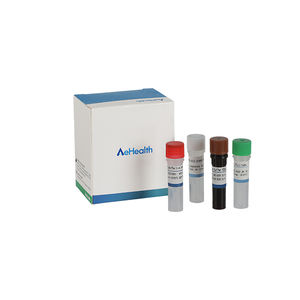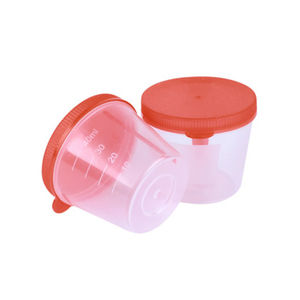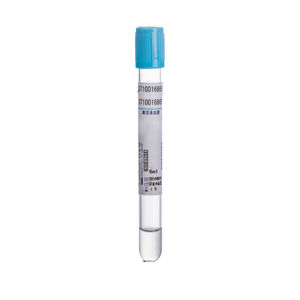

- Products
- Catalogs
- News & Trends
- Exhibitions
Solution reagent for immunoanalysiscTnIcreatine kinase
Add to favorites
Compare this product
Characteristics
- Type
- solution
- Applications
- for immunoanalysis
- Tested parameter
- cTnI, creatine kinase
- Storage temperature
Max.: 30 °C
(86 °F)Min.: 2 °C
(36 °F)
Description
Diagnose myocardial infarction
Evaluate the effect of thrombolytic therapy
Evaluation of the scope of re-embolization and embolization
Improve early sensitivity and late specificity in the diagnosis of heart disease
Performance Characteristics
Detection Limit:
CK-MB: 2.0 ng/mL; cTnI: 0.1 ng/mL; Myo: 10.0 ng/mL.
Linear Range:
CK-MB: 2.0-100.0 ng/mL; cTnI: 0.1-50.0 ng/mL; Myo: 10.0-400.0 ng/mL.
Linear correlation coefficient R ≥ 0.990;
Precision: within batch C.V. is ≤ 15%; between batches C.V. is ≤ 20%;
Accuracy: the relative deviation of the measurement results shall not exceed ± 15% when standardized accuracy calibrator is tested.
Troponin I is composed of 205 amino acids with a relative molecular weiaht of about 24KD. It is a protein rich in alpha helix; it forms a complex with cTnT and cTnc, and the three have their own structure and function.After myocardial injury occurs in humans, myocardial cells rupture, and troponin I is released into the blood circulatory system, which increases significantly within 4 to 8 hours, reaches a peak value in 12 to 16 hours after myocardial injury, and maintains a high value for 5 to 9 days
Troponin I has a high degree of myocardial specificity and sensitivity, and is currently the most idea biomarker of myocardial infarction.
Creatine Kinase (CK) has four isoenzyme forms: muscle type (MM), brain type (BB), hybrid type (MB) ano mitochondrial type (MiMi). Creatine kinase is contained in many tissues, but the distribution of each isoenzyme is different.
Skeletal muscle is rich in M-type isoenzymes, while brain, stomach, small intestine bladder and lunas mainly contain B-type isoenzymes.
Related Searches
- Assay kit
- Solution reagent kit
- Blood assay kit
- Serum assay kit
- Infectious disease detection kit
- Protein reagent kit
- Immunology reagent
- POC reader
- Real-time detection kit
- Enzyme reagent
- Infectious disease POCT analyzer
- POC reader with touchscreen
- Monkeypox detection kit
- Herpes detection kit
- Cardiac troponin I reagent
- Creatine kinase reagent kit
- Parvovirus assay kit
- Rubella assay kit
- CLIA POC analyzer
- Varicella-zoster virus test kit
*Prices are pre-tax. They exclude delivery charges and customs duties and do not include additional charges for installation or activation options. Prices are indicative only and may vary by country, with changes to the cost of raw materials and exchange rates.









